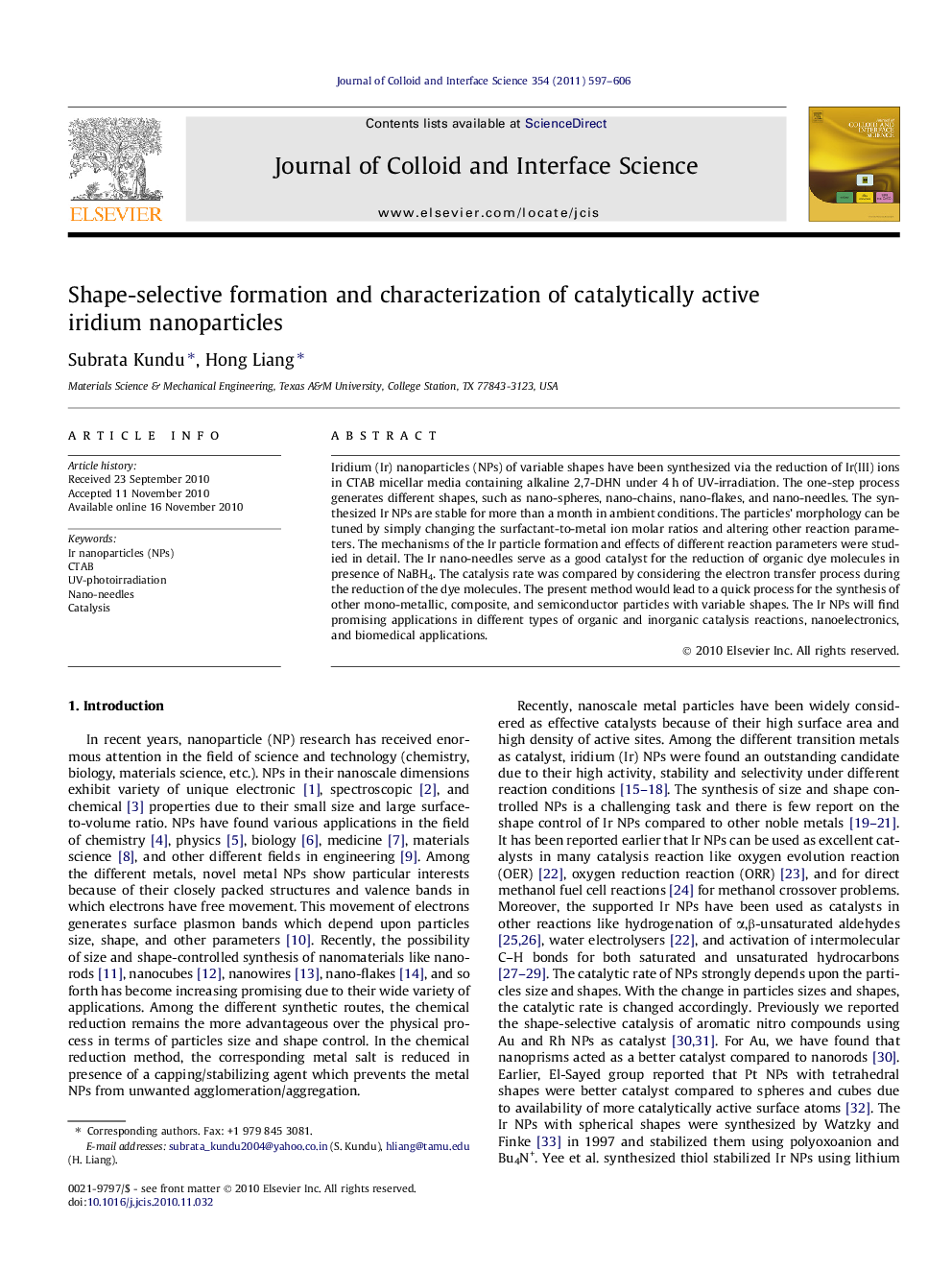| Article ID | Journal | Published Year | Pages | File Type |
|---|---|---|---|---|
| 608921 | Journal of Colloid and Interface Science | 2011 | 10 Pages |
Iridium (Ir) nanoparticles (NPs) of variable shapes have been synthesized via the reduction of Ir(III) ions in CTAB micellar media containing alkaline 2,7-DHN under 4 h of UV-irradiation. The one-step process generates different shapes, such as nano-spheres, nano-chains, nano-flakes, and nano-needles. The synthesized Ir NPs are stable for more than a month in ambient conditions. The particles’ morphology can be tuned by simply changing the surfactant-to-metal ion molar ratios and altering other reaction parameters. The mechanisms of the Ir particle formation and effects of different reaction parameters were studied in detail. The Ir nano-needles serve as a good catalyst for the reduction of organic dye molecules in presence of NaBH4. The catalysis rate was compared by considering the electron transfer process during the reduction of the dye molecules. The present method would lead to a quick process for the synthesis of other mono-metallic, composite, and semiconductor particles with variable shapes. The Ir NPs will find promising applications in different types of organic and inorganic catalysis reactions, nanoelectronics, and biomedical applications.
Graphical abstractIridium (Ir) nanoparticles (NPs) of variable shapes have been synthesized for the first time via reduction of Ir(III) ions in CTAB micellar media containing alkaline 2,7-DHN under 4 hour of UV-irradiation. The one-step process exclusively generates different shapes, such as nano-spheres, nano-chains, nano-flakes, and nano-needles. The synthesized Ir NPs are stable for more than a month in ambient conditions. The particles’ morphology can be tuned by simply changing the surfactant-to-metal ion molar ratios and altering other reaction parameters. The mechanisms of the Ir particle formation and effects of different reaction parameters are studied in detail. The Ir nano-needles serve as a good catalyst for the reduction of organic dye molecules in the presence of NaBH4. The catalysis rate was compared by considering the electron transfer process during reduction. The present method would lead to a quick process for the synthesis of other mono-metallic, composite, and semiconductor particles with variable shapes. The Ir NPs will find promising applications in different types of organic and inorganic catalysis reactions, nanoelectronics, and biomedical applications.Figure optionsDownload full-size imageDownload high-quality image (36 K)Download as PowerPoint slideResearch highlights► Shape control synthesis of nanostructured materials shows potential applications in nanoelectronic and optoelectronic devices; catalysis; and structural composites. ► Ir NPs are of particular interest because they used as excellent catalyst in many catalysis reactions. ► A one-step in-situ approach for synthesis of Ir NPs with variable shapes under 4 hour of UV-irradiation. ► The synthesized Ir NPs serve as a good catalyst for the reduction of organic dye molecules in the presence of NaBH4.
